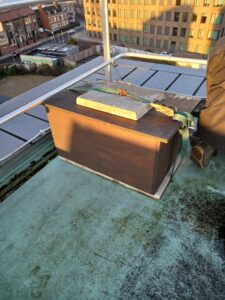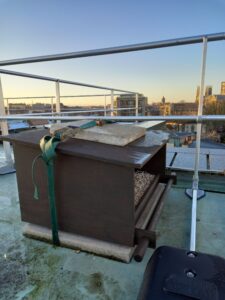Just before the Christmas break, I went up to the top of St John Central Accommodation with Simon and Rob from the Grounds team to have a look at the newly installed peregrine falcon nest box. Rob also replaced the batteries for the wildlife camera to capture any peregrines flying nearby in the future.
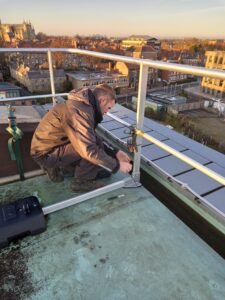
The nest box has been built by our joiner Neil, who has also built a number of bird boxes around our campus and residences, including the swift nest boxes at the Phoenix building. This spacious peregrine falcon nest box has pebbles inside it to be used as nesting material.
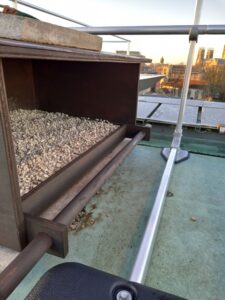
Nesting sites usually suitable for peregrine falcons are cliff-ledges, quarry faces, crags, or sea-cliffs but recently, they have started to use man-made constructions, especially tall buildings *1. Their nest box must be placed high above the ground, and that is why it has been placed at top of St John Central Accommodation.
In the British Isles, peregrines do not migrate, and the majority stay within 100 km of their birthplace*2. Peregrines also tend to have one or more nest sites locally as part of their territory *3. There are peregrine falcons around York so our hope is that our nest site will be used by peregrines one day.
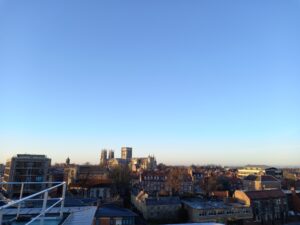
Peregrines are among the fastest animals on the planet, reaching speeds of up to 200 miles per hour when ‘stooping’ – diving down on its prey from a great height. Prey is usually taken mid-air and consists mostly of birds like feral pigeons and collared doves*4. Peregrines were at a low point in the 1960s due to human persecution and the impact of pesticides in the food chain. Improved legislation and protection has helped the birds to recover and they have now expanded into many urban areas *5.
*1 Source: RSPB Peregrine habitat and food
*2 Source: RSPB Peregrine falcons Population and Trends
*3 Source: RSPB Peregrine falcon Nest sites and breeding habits
